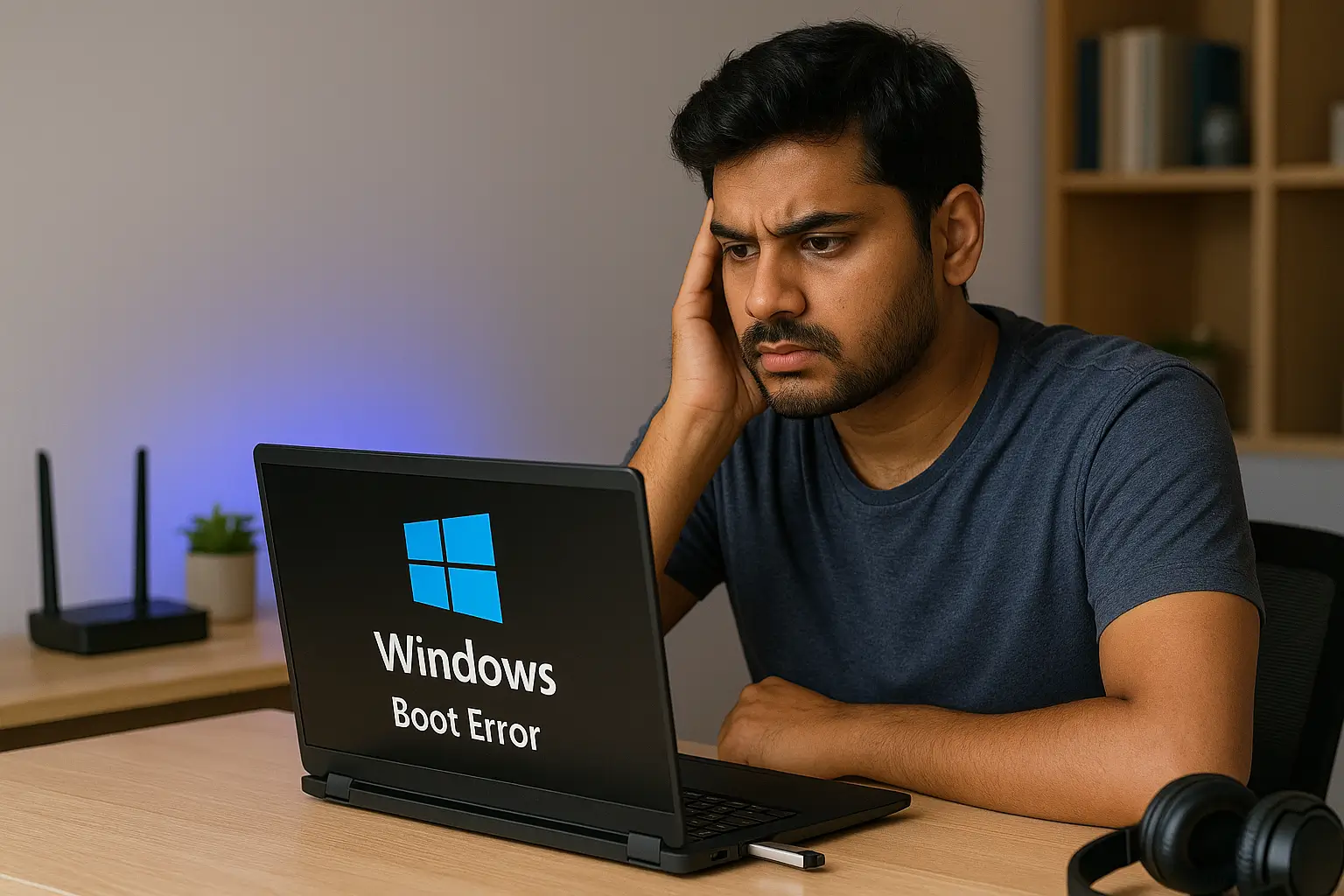Table of Contents:
Introduction
Losing important files due to a corrupted hard drive can be a nightmare for anyone. Fortunately, there are ways to recover your data and minimize the damage. This blog post will guide you step by step on how to recover files from a corrupted hard drive in Windows using simple yet effective methods. Whether you’re dealing with system crashes, errors, or even physical damage to your hard drive, we’ve got you covered.
Why Does a Hard Drive Become Corrupted?
Before diving into the recovery process, it’s important to understand why your hard drive might become corrupted. Corruption can occur due to several reasons:
- File system errors: Problems with the Windows file system (NTFS, FAT32) can lead to corruption.
- Physical damage: Bad sectors or mechanical failures can affect the drive.
- Power outages: Sudden shutdowns or power surges can interrupt processes, leading to corruption.
- Virus or malware attacks: Malicious software can damage your files or the file system itself.
Key Preparations Before Recovery
1. Stop Using the Hard Drive
- Continued use can overwrite recoverable files. Disconnect the drive immediately if it’s external or stop writing data to it.
2. Check Drive Visibility in Windows
- Open File Explorer → Check if the drive is listed.
- If it’s not visible, check Disk Management by pressing
Win + X→ Select Disk Management.
3. Backup What’s Accessible
- If some files are still accessible, copy them to another drive before proceeding with recovery attempts.
Methods to Recover Files from a Corrupted Hard Drive
Method 1: Check the Health of Your Hard Drive
Before attempting any data recovery, check the health of your drive:
- Use Windows Built-in Tools:
- Open File Explorer and right-click on the corrupted drive.
- Select Properties, then go to the Tools tab.
- Click on Check under the “Error Checking” section.
- If Windows detects issues, it will attempt to fix them automatically.
- Use Command Prompt:
- Press
Win + R, type cmd, and press Enter. - Type
chkdsk X: /f(replace “X” with the drive letter of your corrupted hard drive). - Press Enter. The
chkdskutility will scan and attempt to fix errors on the drive.
- Press
If these methods don’t resolve the issue, proceed with the next steps.
Method 2: Use File History for Backups
Windows’ File History feature can restore files if backups were enabled.
- Go to Control Panel → Search for File History.
- If File History is enabled, select the drive and restore files from the backup.
Method 3: Use Windows Built-in Recovery Tools
A) System Restore
- Press
Win + R, typerstrui.exe, and press Enter. - Choose a restore point where the system was functioning properly.
B) Previous Versions
- Right-click the corrupted folder or drive.
- Select Restore previous versions → Choose a version to restore.
Method 4: Use Data Recovery Software
If Windows tools didn’t fix the corruption, you can use data recovery software. These programs can scan your hard drive for recoverable files and help restore them.
Some popular data recovery software options include:
- Recuva (Free & Paid Versions)
- EaseUS Data Recovery Wizard
- MiniTool Power Data Recovery
To use these tools:
- Install the recovery software (preferably on a different drive to avoid overwriting data on the corrupted drive).
- Launch the software and select the corrupted drive for scanning.
- Let the tool scan for lost or damaged files.
- After the scan, review the results and select the files you want to recover.
- Save the recovered files to a different location (preferably an external drive or another healthy partition).
Method 5: Use a Bootable Recovery Drive
If the system fails to boot, use a bootable USB to recover files.
- Create a bootable USB with tools like Rufus or Windows Installation Media Tool.
- Boot your system using the USB.
- Use recovery software from the bootable environment to retrieve files.
Method 6: Consult a Professional Data Recovery Service
For severe hardware damage, DIY recovery might not be feasible. Seek help from professionals who specialize in hard drive data recovery.
How to Prevent Future Data Loss
1. Regular Backups
Use external drives or cloud services to maintain updated backups.
2. Install Antivirus Software
Protect your system from malware that can corrupt files.
3. Avoid Sudden Shutdowns
Use an Uninterruptible Power Supply (UPS) to prevent abrupt power loss.
4. Monitor Disk Health
Use tools like CrystalDiskInfo to check for bad sectors and drive health.
FAQs
Q1: Can I recover files from a hard drive that won’t boot?
Yes, even if your hard drive won’t boot, you can still recover files by connecting the hard drive to another working computer as a secondary drive or using a bootable USB recovery tool.
Q2: What happens if I accidentally overwrite my corrupted files during recovery?
Overwriting data during the recovery process can lead to permanent loss of those files. Always ensure you’re recovering files to a separate drive or storage location.
Q3: How do I prevent hard drive corruption in the future?
To prevent future corruption:
- Regularly back up your data.
- Use a surge protector to prevent power surges.
- Keep your computer free from malware.
- Use disk checking tools regularly.
Q4: What should I do if I hear strange noises from my hard drive?
If you hear clicking or grinding sounds, it’s a sign of physical damage. Stop using the drive immediately and consider professional data recovery services.
Conclusion
Recovering files from a corrupted hard drive in Windows may seem daunting, but with the right tools and methods, you can often restore your important files. Remember to check the health of your drive first, use reliable data recovery software, and seek professional help if needed. By following this guide, you can minimize the damage caused by hard drive corruption and protect your data in the future.
Thank you for visiting our website! We hope this guide helps you achieve a smoother and faster Windows experience. Do check out our other tech tips and visit again Fyss.in for more solutions.



